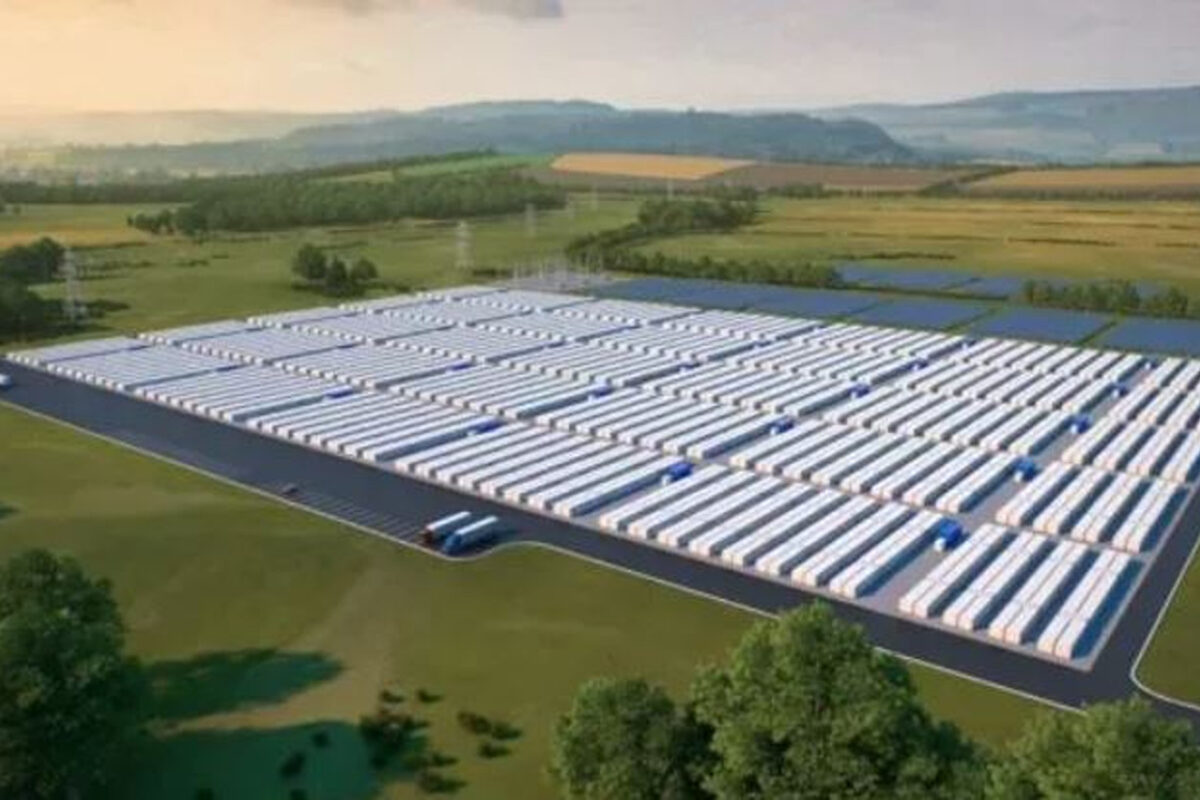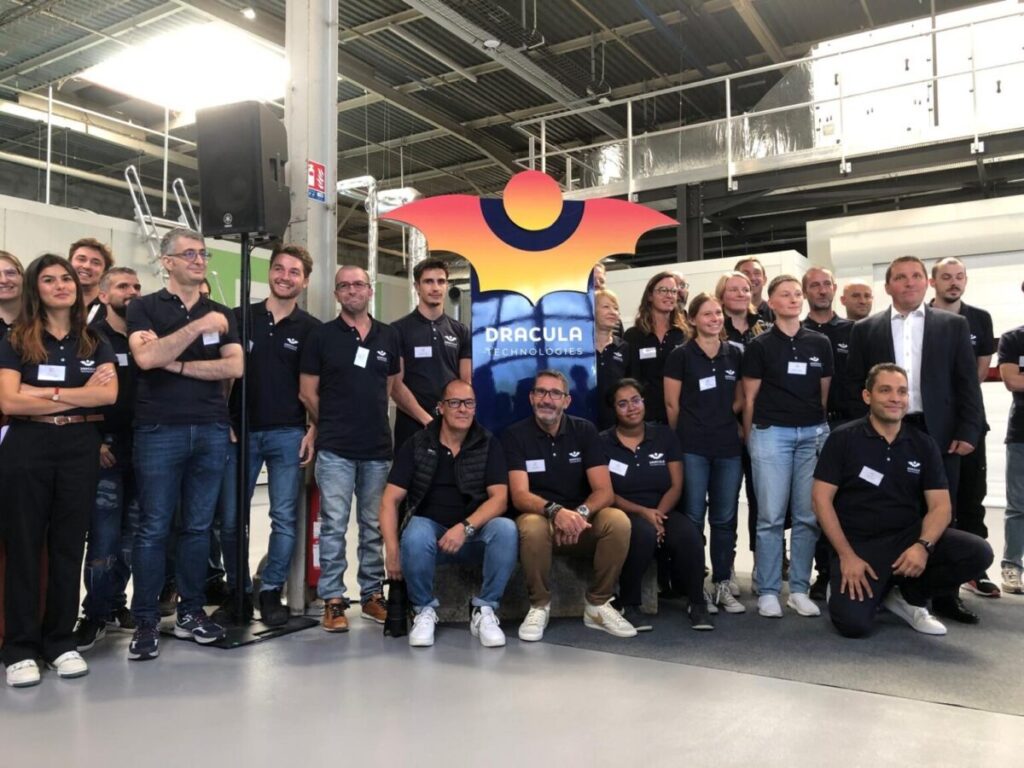The Valence plant can produce 150 million square centimeters of active surface area of OPV modules using inkjet printing technology, with the aim of quadrupling capacity by 2026. Sensitive to natural and artificial light, Dracula’s modules work indoors from any light source and are intended for use in IoT, industrial electronics and as battery replacements.
Dracula Technologies inaugurated its production line for organic photovoltaic (OPV) modules in Valence on September 12. With approximately 40 employees, seven patents filed, the first commercial contract and ambitious development projects, the company applies the ‘lab to fab’ principle: an initial development phase based on laboratory research, followed by investments in industrial equipment to put the innovation into production .
What is special about Dracula Technologies modules? They are sensitive to natural and artificial light and will work indoors with any light source. Dracula’s modules are best used as battery replacements in remote controls, small industrial connected objects, sensors or even to power electronic chips in industrial or logistics centers.
The Green Micro Power Factory now has a production capacity of 150 million square centimeters of active area of organic photovoltaic modules. The production is based on inkjet printing technology developed by Dracula after twelve years of research. Because they are printed, the modules can take any shape without incurring additional production costs and can be adapted to power needs.
OPV: Finding the right technological and industrial formula
The principle of OPV technology is based on the association of a semiconducting polymer (donor) with an organic material (acceptor), which together form the active layer. The active layer absorbs the light and then converts it into energy by creating bound electron-hole pairs (excitons) that move until they reach a donor/acceptor (D/A) interface, where charge separation occurs. The separated charge carriers move through this active layer until they pass through the photoactive layer, the interface layers and then the electrodes to reach the external circuit.
Dracula Technologies uses the concept of volume heterojunction, where the active layer consists of a heterogeneous mixture of donor and acceptor, allowing the creation of a very wide D/A interface. It is to the composition and nanomorphology of the mixture of active layers (the inks) that the company marks its added value and its industrial secret. But that’s not all: “We are also working on compatibility between the layers,” explains Sadok Ben Dkhil, the company’s Chief Technology Officer.
In the OPV Layer technology developed by the company, each of the four layers is printed in such a way that the transport of charges is optimized both in the materials and in the final module. Bee The Valence factory allows engineers and technicians to produce these different layers, which in a sense become the “inks” used for inkjet printing production.
The production tool consists of an integrated electronic printing ecosystem. Much of the equipment was purchased from OPV’s former partner Asca, which had ceased production shortly before its takeover by Germany’s Hering.
In the Dracula factory, modules validated in the R&D laboratory are transferred to the pilot line for optimization. They then move to automated production: the substrate cassettes with the module design are placed on the automated island where they are handled by the robot, which successively places them on the printing machines to receive the corresponding ink layer. The active layer needs time to stabilize and each print must be followed by a rest period to allow the solvent residues to evaporate. The print heads are equipped with nozzles with a diameter of several micrometers, which ensure that ink droplets are projected evenly, creating accurate patterns. The maintenance of these sensitive tools is at the core of the company’s industrial system.
Nanoelectronics means (ideally) zero defects, and that is also the case outside the printing machine. “Through automation we can avoid handling errors. They are sometimes visible to the naked eye during production, but at our scale they can have a major impact on the aesthetic and technical outcome of the final module,” explains Brice Cruchon, CEO of Dracula Technologies. “Our goal is to automate all phases of the production line by the end of 2026 by integrating innovations into our current process.”
Another goal for the young factory is to quadruple production capacity to 600 million square centimeters of modules by 2026. To achieve this, Dracula plans to increase the number of shifts, either with multiple shifts (morning and evening, or even three shifts during peak hours). production periods) or by opening production on weekends. It also plans to open new production lines. And there is no shortage of space. The company has moved to a business premises of 2,500 square meters. Even the old greenhouses in the area can be converted into new cleanrooms for further production development.
Finding the right market: replacing batteries, but not just batteries
Dracula Technologies’ OPV modules have natural applications in everyday battery-powered items such as remote controls and smoke detectors. With a power of 61 to 72 µW for 100 lux (a low level of general indoor lighting), the devices are able to replace batteries. This market is made all the more accessible by the fact that the company is developing a flexible film storage device that uses a layer technology integrated directly into the module through inkjet printing. The technology, called LAYER®Vault, can supply energy to a device even if it has not been exposed to light for a short period of time (a few hours, one night) (complete darkness).
Dracula has now signed its first contract with COOLR for autonomous camera applications in refrigerator inventory management. “We are talking about several hundred thousand articles per year in the coming years,” says Cruchon.
Other applications are conceivable for the digital retail price tag market, for example for product-integrated logistics tracking tags for inventory management, or for geolocation equipment for livestock, or even in smart cards/chips (metro, ID cards, etc.). .) that could become receptive instead of just transmitters.
The inauguration of the Green Micro Power Factory brought together a number of potential customers. Interest has been shown in other sectors, but it is still too early to make any statements about this. Dracula Technologies currently has 40 employees. The aim is to have a turnover of 40 million euros by 2026 and to recruit around a hundred people, including cleanroom operators for production, process and quality engineers and people involved in business development.
This content is copyrighted and may not be reused. If you would like to collaborate with us and reuse some of our content, please contact: editors@pv-magazine.com.
Popular content


